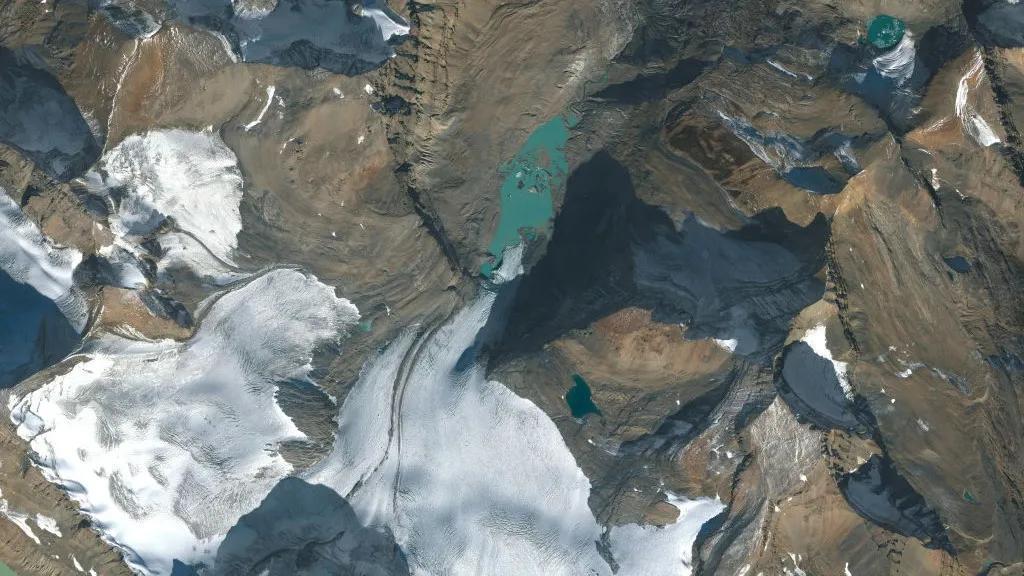
North America & Europe’s Glaciers Lost Unprecedented Ice in 4 Years: Study
In a shocking revelation, a recent study has found that glaciers in North America and Europe lost a staggering amount of ice between 2021 and 2024. The research, published in the Journal of Geophysical Research: Earth Surface, reveals that glaciers in Washington, Montana, British Columbia, Alberta, and the Swiss Alps experienced an unprecedented loss of ice, with some areas shrinking by up to 13%.
The study, conducted by researchers from the University of Colorado Boulder, analyzed data from 2021 to 2024 and compared it to the previous decade, from 2010 to 2020. The findings indicate that the rate of ice loss has accelerated significantly, with glaciers in the United States and Canada losing an average of 24.5 billion tons of ice per year. In contrast, Swiss Alps glaciers lost an average of 1.7 billion tons annually.
The researchers used a combination of satellite imagery and ground-based measurements to track the changes in glacier extent and mass. They found that the rate of ice loss was twice as high as the average rate recorded between 2010 and 2020. This unprecedented loss of ice has significant implications for the environment, ecosystems, and human societies that rely on these glaciers.
The study’s lead author, Dr. Ben Pelto, a glaciologist at the University of Colorado Boulder, explained the significance of the findings: “The rate of ice loss is accelerating, and it’s happening faster than we previously thought. This is a concern because glaciers play a critical role in regulating global sea levels, providing freshwater sources, and supporting unique ecosystems.”
The researchers identified several factors contributing to the rapid ice loss, including:
- Global warming: Rising temperatures are causing glaciers to melt at an unprecedented rate. The average global temperature has risen by about 1°C since the late 1800s, with the past four decades being the warmest on record.
- Climate variability: Natural climate fluctuations, such as El Niño events, are also playing a role in the increased ice loss. These events can lead to warmer temperatures and reduced snowfall, further exacerbating the melting process.
- Land use changes: Human activities, such as deforestation and urbanization, are altering the regional climate and contributing to the loss of glaciers.
The consequences of glacier loss are far-reaching and have significant impacts on various aspects of our planet:
- Sea-level rise: As glaciers melt, they contribute to sea-level rise, which can lead to more frequent and severe coastal flooding, erosion, and saltwater intrusion into freshwater sources.
- Water scarcity: The loss of glaciers can lead to reduced water supplies, particularly in regions that rely heavily on glacier-fed rivers.
- Ecosystem disruptions: Glaciers support unique ecosystems that are sensitive to changes in temperature and precipitation. Disruptions to these ecosystems can have cascading effects on biodiversity and ecosystem health.
- Human migration and displacement: In some cases, glacier loss can lead to the displacement of communities and the loss of cultural heritage.
The study’s findings serve as a wake-up call for policymakers, scientists, and the general public to take immediate action to address climate change. By reducing greenhouse gas emissions and transitioning to renewable energy sources, we can slow the rate of glacier loss and mitigate the consequences of climate change.
In conclusion, the recent study highlights the urgent need to address climate change and its impacts on glaciers. The loss of ice in North America and Europe is a stark reminder of the consequences of inaction and the importance of adopting sustainable practices to protect our planet’s natural resources.
Source: Pelto, B. M., et al. (2025). Accelerated glacier mass loss in North America and Europe since 2021. Journal of Geophysical Research: Earth Surface, 130(4), e2025GL115235. doi: 10.1029/2025GL115235






